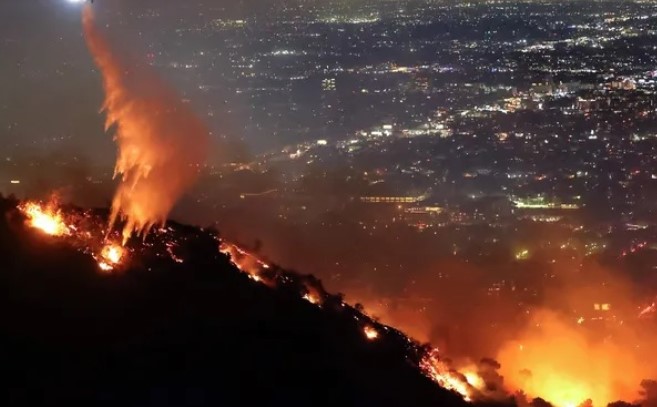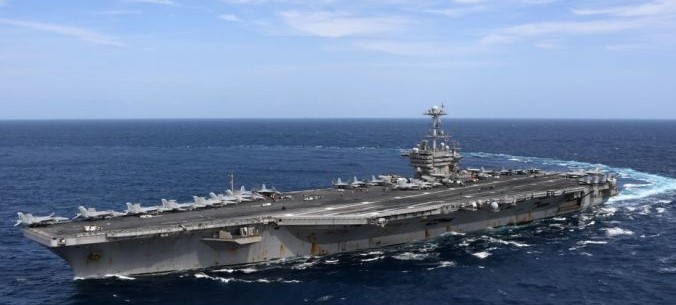
STRATEGIC ASSESSMENT. In late November, U.S. media outlets quoted unnamed intelligence sources as saying that, in early November, Iran and Russia reached a definitive agreement under which Russia will produce Iran-designed armed drones in Russia proper. The agreement builds on recent deals under which Iran has delivered several hundred drones to Russia, which Moscow has used in Ukraine, primarily against civilian infrastructure targets such as power plants and water supply facilities. Iran has also reportedly agreed to transfer unknown numbers of its short-range ballistic missiles to Russia, for use against similar targets. Most of the Iranian drones that are part of the production deal are known as loitering munitions, which are capable of circling the skies until a suitable target is identified, providing greater reaction time and flexibility in target selection. These single-use systems, which use mobile launch platforms, are inexpensive, easy to operate, and have minimal maintenance costs. Low airspeeds allow the drones to travel long distances, sometimes flying below the radars of Ukrainian air defense systems, to reach their targets. This low and slow approach, however, has allowed Ukrainian forces to intercept many of the drones with short-range air defense weapons like heavy machine guns and the German produced Gepard.
Moscow’s turn toward Iran for armed drones confirms that Russia has previously underinvested in its uncrewed aerial system (UAS). Despite this, Russia maintains a large and capable industrial base, and the production deal will grant Moscow greater control over the manufacturing process and possibly allow it to expedite and increase production of these simple but effective weapons. An alternative Iranian drone production facility in Tajikistan, inaugurated by Iran’s Defense Minister in May 2022, has unknown production capacity, and much of that factory’s output may be destined for other recipients, such as Iran’s regional allies and other armed drone customers, such as Sudan and Ethiopia.
The financial terms of the production deal have not been reported, and likely constitute a mix of cash, in-kind payments, and other promises of assistance from Moscow. Both countries are subject to sweeping U.S. and European sanctions, and the extent to which Russia is able to provide Iran with hard currency payments for the drone production agreement is unclear. As an alternative, Iranian leaders may seek additional Russian assistance to boost their nuclear program. Maintaining Russia as a partner may also help in circumventing sanctions that hinder Iran’s ability to acquire components and other goods for its advanced weapons programs. Several days after the reported production deal was reached, a key Russian hardliner, Secretary of the National Security Council Nikolai Patrushev, visited Tehran. According to Iranian and Russian media, Patrushev discussed Western sanctions and “interference” against both Russia and Iran with his counterparts in Tehran. The more than two months of protest in Iran, during which Iranian authorities have killed more than 400 demonstrators, have derailed any realistic prospect for Iran to achieve sanctions relief through an agreement with the United States to resume full compliance with the 2015 multilateral Iran nuclear deal. Iran also undoubtedly is looking to Russia to keep forces in Syria – despite Russia’s urgent need for personnel to deploy to Ukraine – in order to ensure Syrian President Bashar al-Assad maintains his grip on power.
Yet, the production deal with Moscow also carries substantial risks for Tehran. On the one hand, Iranian leaders might see the deal as reducing their exposure to new sanctions because the drones would be produced in Russia, not Iran. On Friday, the Biden administration announced sanctions on three entities within the Russian military responsible for training and transfers related to Iranian drones. Russian and Iranian leaders assess that the United States and NATO have many more options to interdict Iranian deliveries of armed drones to Russia than they have options to interrupt production of the weapons inside the Russian Federation itself. However, U.S., European, and regional leaders view the drone production pact as a deepening of Iran’s involvement in the Ukraine conflict, and a demonstration of Iran’s emergence as a significant strategic threat capable of influencing a war in Europe. Iran’s active and direct support for the Russian war effort increases tensions between the United States and Iran. Iranian involvement in the Ukraine war may strengthen Benyamin Netanyahu’s arguments for increased joint retaliation against Iran between the U.S. and Israel. U.S. forces have struck Iranian targets and their proxies in Iraq and Syria in response to attacks against U.S. personnel. Direct action against Iran as a reaction to its support of Russia, however, is an escalatory step the U.S. is unlikely to take.
“Support is flowing both ways” between Iran and Russia, according to National Security Council spokesperson John Kirby, who went on to say that the Kremlin

The foto has taken from AP
was offering Iran “an unprecedented level of military and technical support.” In return, Tehran is supplying Moscow with drones and potentially ballistic missiles. Referring to the production deal, U.S. National Security Council spokesperson Adrienne Watson couched her response in somewhat ambiguous terms: “The United States – with allies and partners – is pursuing all means to expose, deter, and confront Iran’s provision of these munitions and Russia’s use of them against the Ukrainian people. We will continue to provide Ukraine with the critical security assistance it needs to defend itself, including air defense systems.” Direct action against Iran in response to its support for Russia is exactly the kind of escalatory move many Western leaders have sought to avoid since the outset of the war. U.S. and European leaders are likely to proceed with caution on any decisions that could expand the scope of the war in Ukraine (TSC).





